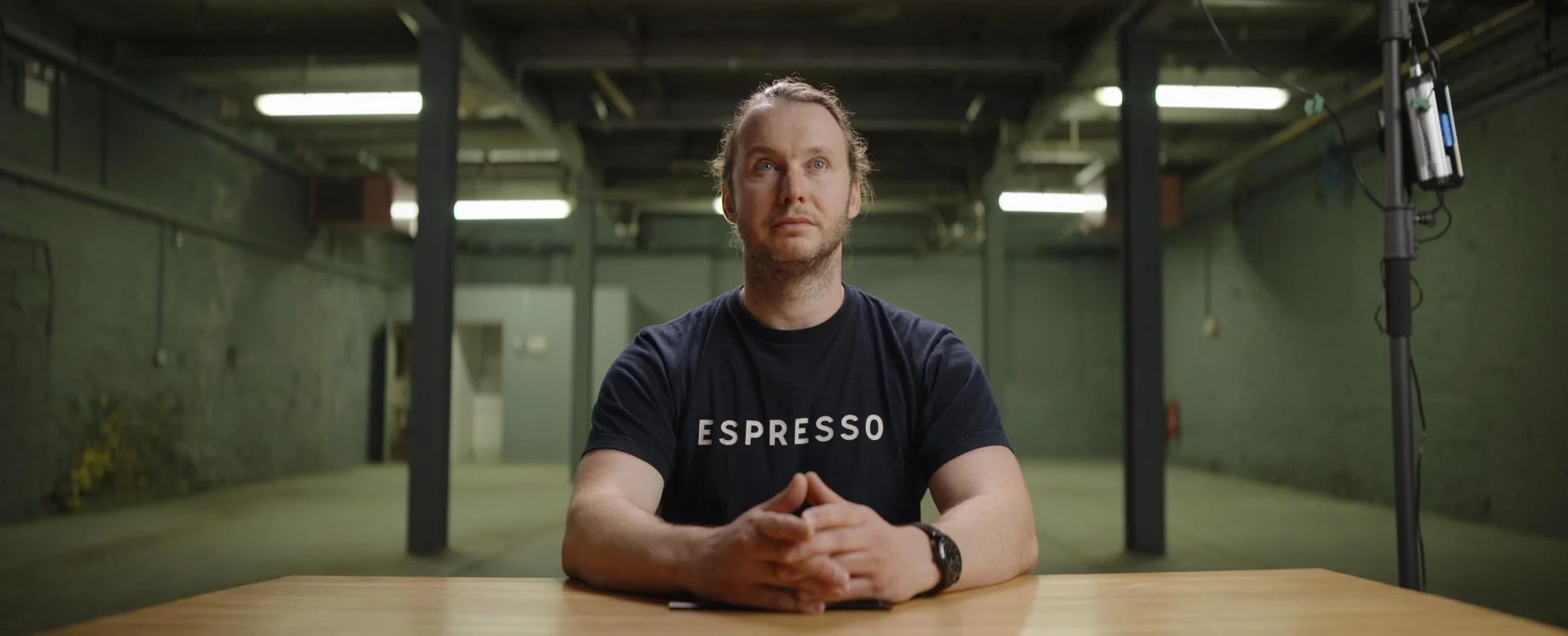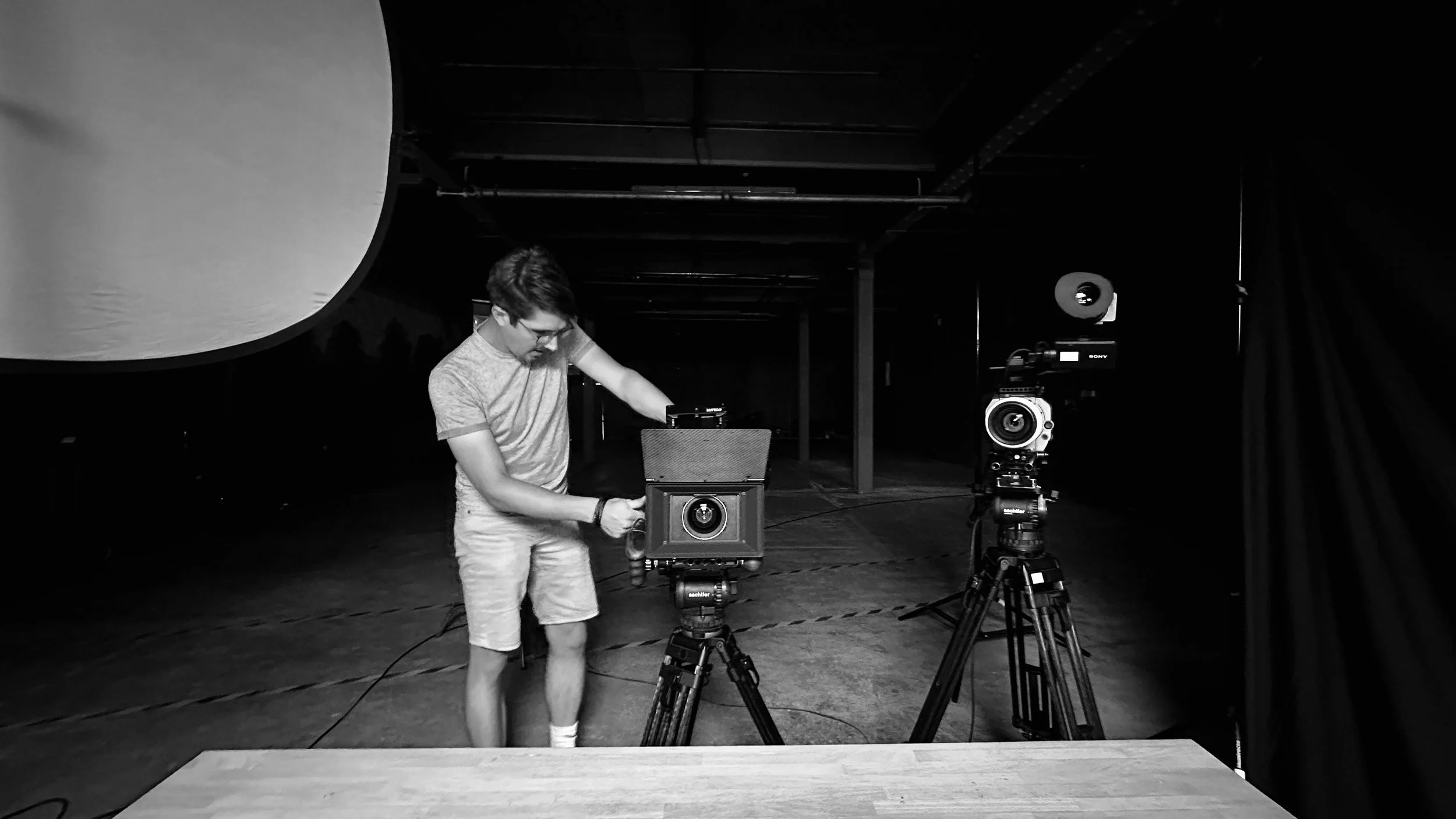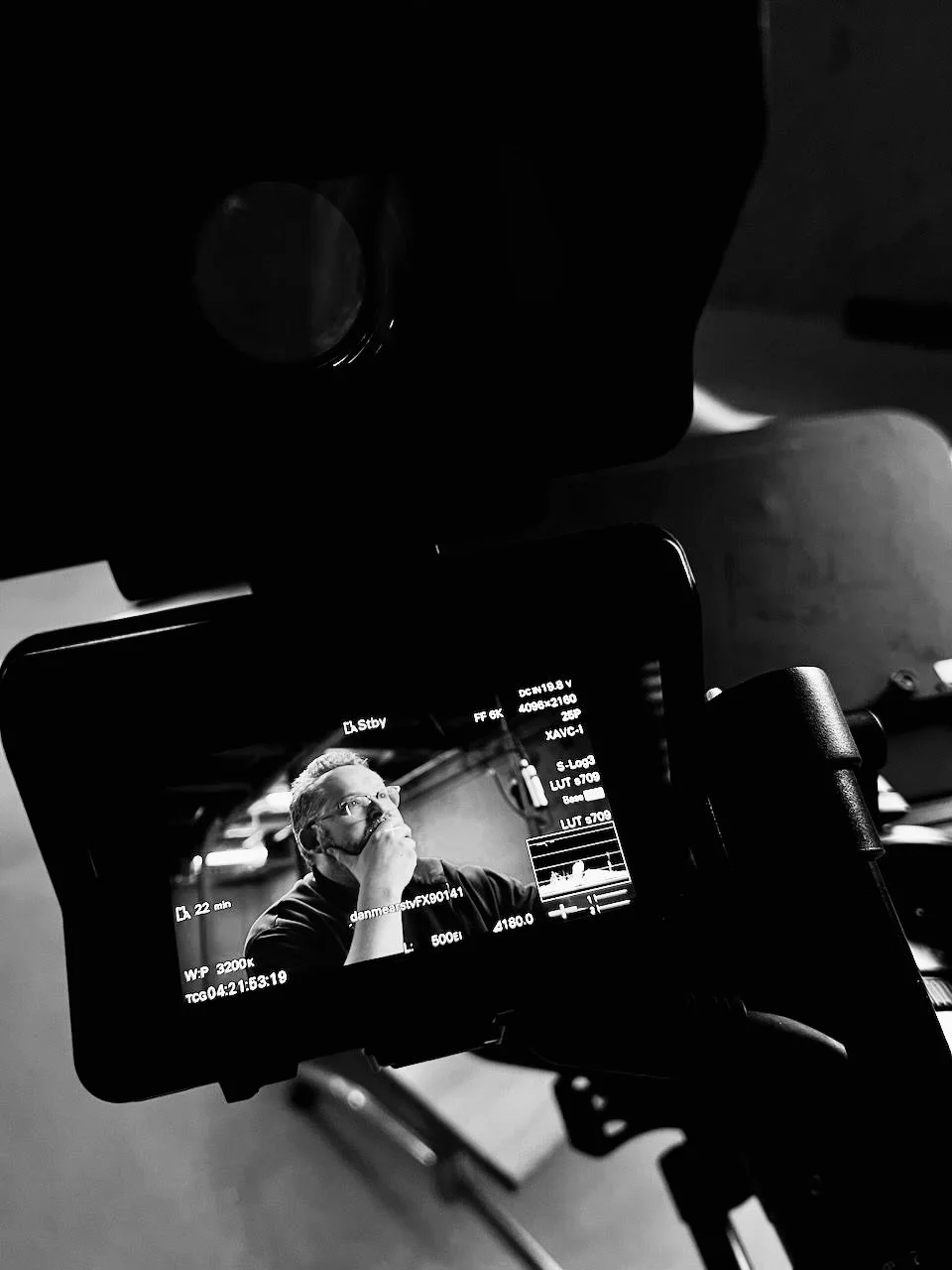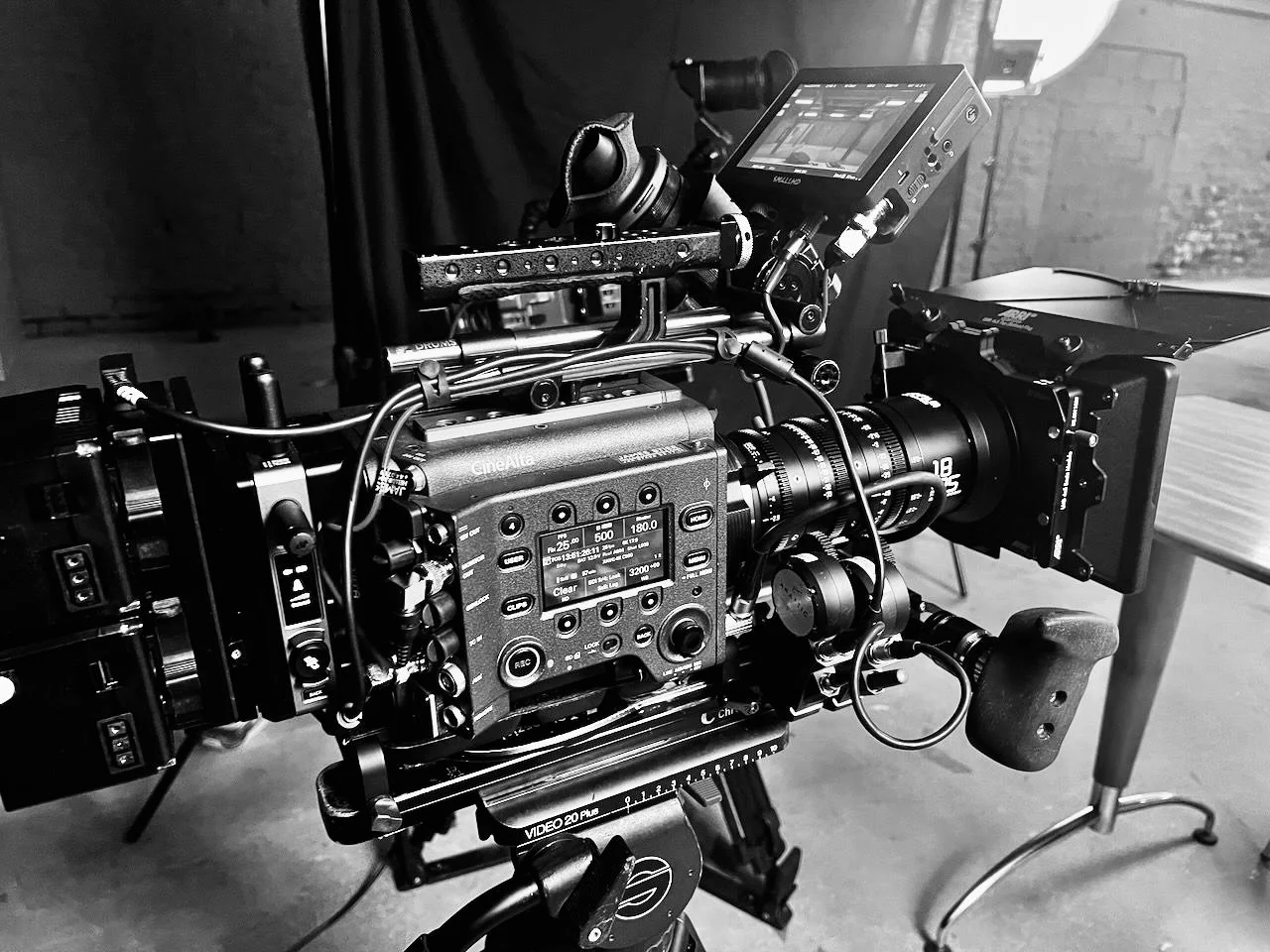North Light Observations
In our busy work lives, it’s rare and quite special to have time to creatively hang out with like-minded folk, in the right space with the right tools. Not to chase anything in particular, but simply to play.
That was the spirit behind our recent lens and camera test at North Light Film Studios, tucked inside the beautifully atmospheric Brookes Mill in Armitage Bridge, Huddersfield.
This wasn’t a white-coat technical trial. No charts, no pixel peeping. Just three creatives: Dan Mears, a Yorkshire-based DOP with a keen eye for light, myself, and Dave Hackney from Digital Cortex, who generously arranged the space and helped bring it all together. The goal was to take a closer look at some newer lenses to my collection, the Viltrox 1.3x anamorphic, in a simple but controlled interview setup, with the Sony Venice as A-cam and Dan’s FX 9 as B-cam. It was also great toe valuate other FX cameras alongside the Venice, especially the FX 9 as its the dark sheep of the FX range which I rarely see in the wild.
In an age of shrinking budgets and tighter schedules, we’re being asked more and more to move fast — to jump into interview setups with little time to think about how they’ll look beyond “functional.” But in my mind, documentary deserves more. This test was my attempt at a continued quiet rebellion, a chance to slow down, drink a coffee and talk about cameras and lights in a way that informs future intention.
And what better place than North Light. The location is a proper gem, a big space full of character; generous with mood before you even rig a light.
The Setup
We kept things straightforward: a 35mm Viltrox 1.3x anamorphic on the Venice (shooting 17:9 for a 23.9:1 extraction) and a 50mm on the FX9 with matching imager settings. It’s worth noting that the FX9 doesn’t support de-squeeze over HD-SDI, so we monitored a de-squeezed image through my Flanders Scientific DM241 — a useful catch for any future workflows involving both cameras. We then switched to the DZO Catta Ace FF zooms to audition a spherical option.
The 18–35mm used on the wide is very much the party lens of the set. We shot it wide open at T2.8 around 32–35mm, and you can see below in the lights just how much distortion, field curvature and comatic aberration the lens introduces towards the edges. It’s quite intense — but I actually rather like it. Dan could easily have lit a little higher and stopped down to clean it up. The only real downside on both the wide and medium Catta Ace zooms is the occasional hint of chromatic aberration, where light splits into coloured fringes at the corners, especially in high-contrast areas. It’s relatively minor, easily fixed in Resolve, and something the Vespids also suffer from, particularly on the wides. I haven’t yet used the Vespid II or the Arles, though I’m curious to see how they compare.
Lighting was simple but deliberate. Dan keyed the subject (me, unfortunately) using a small COB lamp through a softbox, with a reflector close in to wrap the light spilling through the diffusion. A 2x1 panel rigged overhead mimicked practicals, and a small panel bounced into a reflector camera left added a gentle scratch. The rest came from house lights and a touch of negative fill. Less was definitely more and we tried a few variations — soft and natural, more contrasty looks and even a 'protect the identity' version, perfect for a true crime doc.
The Lenses
Both the Viltrox and DZO Catta Ace are relatively entry-level cinema lenses — affordable, practical and ideal for those of us balancing ownership against rental costs. The DZO zooms in particular fill a niche that even higher-end manufacturers don’t quite address. The Angénieux options don’t offer enough range, most other sets are S35 only, and while I like the Zeiss Compact Zoom 28–80, it leaves me a little short at both ends. It’s probably the only other option I’d seriously consider.
The Viltrox 1.3x anamorphics have been turning heads for good reason. While budget in price, the look they deliver is anything but. They’re solidly built, PL mount, perfectly usable wide open and now available in an expanding set of focal lengths. The flares are tasteful, the squeeze feels natural and the colour consistency between the 35 and 50 was impressive. Skin tones look great, highlights hold well and they add just enough texture in interviews without shouting about it. They’d happily shoot 3:2 open gate and deliver a clean, cinematic 16:9 full-frame image. In short, they punch well above their weight and feel like tools made by people who actually shoot.
The DZO Catta Ace zooms are a different beast — less precise, not overly clinical, warm, contrasty, and full of quirks. As mentioned, the 18–35 is the party lens of the set, showing strong aberrations at the long end and a gentle softness that some will love and others might avoid. Personally, I like them. I’d think twice before using them on a drama or commercial given their close-focus distance and minimum T2.8, and they do shift a little in colour across the range. That’s not ideal for matching, but perfectly manageable with prep if you’re shooting single-camera on a doc or corporate.
Side-by-Side
Side by side on the DM241, you can see the shared DNA of the cameras. The Venice has that extra depth and softness — a little bit of magic that’s hard to define. It’s subtle, though, and the FX9 holds up impressively well, remaining a reliable workhorse. It’s the pairing I’d recommend for interviews, with the only real drawback being the 1.3x monitoring limitation on the FX9. I suppose it was built more for broadcast than cinema. Monitoring through the DM241 was a win, though, proving that workable solutions are easy enough. We could dial in exposure properly and view a de-squeezed image in real time.
This wasn’t about proving which lens or camera is best. It was about taste — about having options and building a reference. But more than that, it was about community. About stepping away from guarded tricks and quiet competition. We’ve all met those people… you ask one question and it’s like you’ve asked for their bank details.
I’m not interested in secrets. I’m interested in raising the bar for everyone. Because when we all get better, the work gets better — and that’s the point, right? Our bosses appreciate it, stories get stronger and crews take pride in the images they help shape.
Testing gives us space to try things, break things and be surprised. It reminds us why we got into this in the first place.
I’m grateful for days like this, reconnecting with Dan - always calm, curious and full of experience, and with Dave, who not only brought us together at North Light but continues to create space for local filmmakers through his work at The Square Lens Alliance.
This kind of collaboration is essential, especially here in West Yorkshire, where top-class talent too often flies under the radar. We don’t need to be London or even Manchester, but we do need to keep showing up, sharing and backing each other.
Huge thanks again to Dan, Dave and North Light for the space. And if you’re thinking, “I wish I had time for stuff like this,” please carve it out. You’ll walk away with better instincts, stronger references, and maybe a new collaborator or two. Oh, and if you fancy joining the next one — get in touch.










